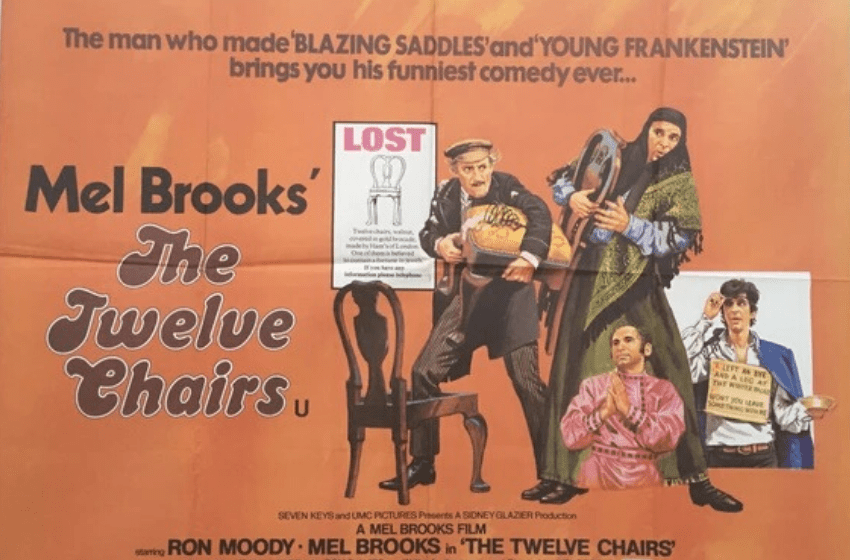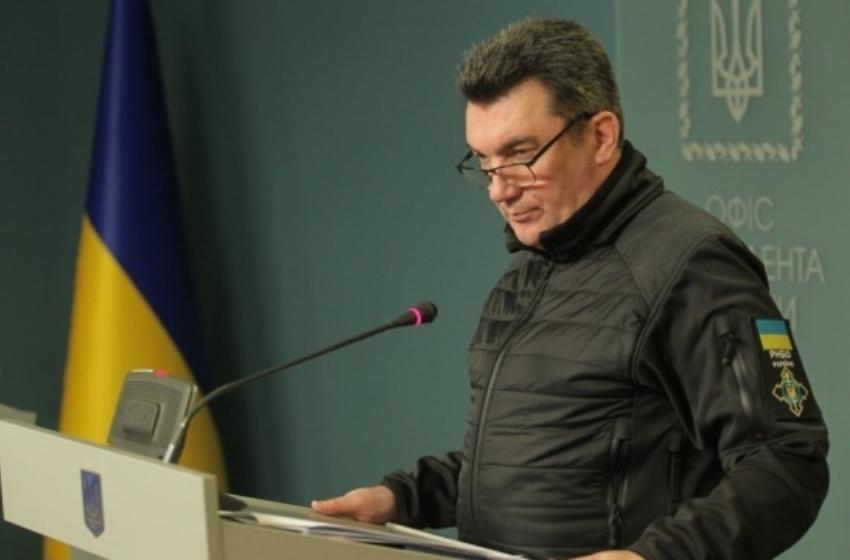There is a funny monument in the City Garden of Odessa, a bronze chair with strange inscriptions, and the tourists love to seat there and take some pictures. It is refers to a Soviet masterpiece, “The Twelve Chairsâ€, written by two famous Odessite authors.

“The Twelve Chairs†is a famous satirical novel by the Odessa’s Soviet authors Ilf and Petrov, published in 1928. The plot follows the long travel of the characters searching for an old chair with a hidden treasure of jewellery inside. There are 20 films, which screenplay was based on this novel.
In the Soviet Union of 1927, a former Marshal of Nobility, Ippolit Matveyevich Vorobyaninov ("Kisa"), works at the register of marriages and deaths in a sleepy provincial town. His mother-in-law reveals on her deathbed that her family jewellery was hidden in one of the twelve chairs of their dining room set. But those chairs, along with all other furniture, were confiscated by the Bolsheviks. “Kisa†set off to find the treasure, but his friend Ostap Bender convince him to bring him as a partner in the search.
The searchers find the set of chairs on sale at an auction in Moscow, where they are split up and sold individually. In their quest to recover the chairs, they will roam all over the Soviet Union, with a series of comic adventures. A spiteful priest, Father Fyodor (who had known of the treasure from the confession of Vorobyaninov's mother-in-law), is their obsessed rival in the hunt for the treasure. In the story, Ostap shows a mastery of human nature and eliminates all obstacles, but “Kisa†steadily brakes down.

They find with difficulty each chair, but always the wrong one. Finally, they discover the last chair in a new public recreation center. Vorobyaninov murders Ostap to keep all the loot for himself, but finds out that the jewels have already been found and used to build up the recreation center itself, a symbol of the new society. Eventually, “Kisa†loses his sanity.
Films based on the Novel
Approx. 20 film in several countries were shot using the story of "The Twelve Chairs". Mel Brooks made the most famous version (titled: The Twelve Chairs) in 1970. His film followed the plot more closely, but with a softened "happy" ending. Frank Langella played the part of Ostap Bender, Ron Moody played “Kisa†Vorobyaninov, and Dom DeLuise played Father Fyodor.
In the 1970s, two adaptations were made in the USSR: a film in 1971 by Leonid Gaidai, with Archil Gomiashvili as Bender; and a miniseries in 1976 by Mark Zakharov with Andrei Mironov as Bender.
The authors: Ilf and Petrov

Ilya Ilf and Evgeniy Petrov were born in Odessa, but they knew each other in Moscow, in 1925, where both were working for a satirical newspaper for railway workers: "Gudok" (“The Whistleâ€, like the train whistle). Ironically, Mikhail Bulgakov got his start in that newspaper as well. It was the older brother of Petrov, already a famous writer, who gave them the idea for The Twelve Chairs. A legend says that the discovery of a treasure in the Moscovite mansion of Prince Yusupov (the murderer of Rasputin) inspired the authors.

Ilya Il'f and Evgeny Petrov were part of a great literary movement in Soviet Union during the 1920s. It was an exciting and contradictory time: there was a hard censorship, and Il'f and Petrov personally suffered from it, but there was also among those young writers the sense of being witnesses of the birth of a new progressive era in human history.
Once they became acquainted, Ilf and Petrov began to write humorous pieces for the "Pravda" and other publications. They wrote two novels, many short stories and satirical sketches, and at least one play. Their partnership lasted only a decade. Both writers died before they were forty: Ilf in 1936 of tuberculosis, and Petrov in 1942, in a plane crash while working as a correspondent during the Second World War.
Probably, the timing of their deaths helped to protect their works. Their evaluators were able to claim that the authors' irony was politically correct Soviet laughter. Therefore, their books could by and large be kept in print, avoiding the persecution suffered by other writers.
The monument in Odessa

This bronze sculpture is one of the favourite places of citizens and tourists in the City. The monument to the Twelfth Chair, placed on a marble pedestal, was inaugurated on April 1, 1999. Near the chair there is a suitcase that belongs to Ostap Beder. On the back of the chair you can read some of the most famous quotes from the novel:
How much for opium for the people?
All the contraband is produced in Odessa on the Mala Arnautska Street.





















